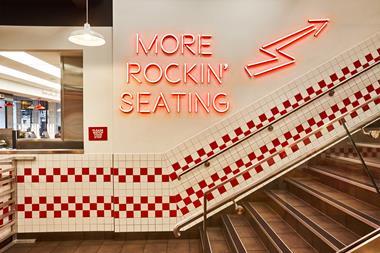Against the backdrop of a challenging business environment, where markets are more judgmental and unforgiving, how important is the tone that the CEO sets within an organisation, asks Tim Clouting, Partner at Savannah Group.
I read an interesting article recently outlining the ongoing war between optimism and pessimism in the UK and how the pendulum no longer swings in the controlled, methodical way that it used to. Given the pace of technological and social change and the uncertainly this creates (both the risks and the opportunities) means people are feeling the extremes of optimism and pessimism more frequently than ever before.
I wondered what implications this had for CEOs, Chairs, Investors and leaders, and It reminded me of an interview with a very successful entrepreneur in the hospitality and leisure sector (albeit a few years ago when the world was a very different place) who said “there’s nothing worse than a controlling, grumpy CEO”.
So at the latest Savannah Group Hospitality, Travel & Leisure Boardroom Lunch I posed three questions to the CEOs, Chairs and Investors in attendance about the impact of a leaders mentality on the rest of the organisation.
1. How important is the style and mentality of the CEO when leading an organisation?
2. Does a Chair or Investor care about the leadership style of their CEO (if results are delivered)?
3. Should the leadership style of the CEO change as the sector/market changes?
These three questions became the focus of our discussion, and what follows are lessons and insights picked up from talking to some of the most successful people I know, as I continue my quest to understand what makes a complete leader.
1. How important is mentality when leading an organisation?
Should a leader be optimistic or are there certain times when a ‘siege mentality’ is required
Getting the balance right
One Partner of a well-known private equity firm talked about the need for balance when it came to organisational leadership. So if you had a naturally optimistic CEO, they should work alongside a more cautious and conservative CFO, someone who would challenge their thinking. Conversely, if you have an introverted CEO of a large multi-site leisure or hospitality organisation, a sector where often the lowest paid employees actually deliver the service to the customer, you needed an outstanding COO who could unite the large numbers of people behind a common vision, create a positive culture and inspire the team to deliver outstanding service
Keeping communication clear
Another guest, a serial CEO in the sector talked about the need for clear communication in good times and bad, particularly during challenging phases. The visibility of the CEO was therefore key. Over-communicating week after week gives confidence to the team that the business would find a way through the tough times. So even if you’re delivering bad news, people naturally respect honesty, consistency and promptness (not feeling they were the last to know. The CEO has to allocate time in their diary to be seen out in the business, doing weekly/monthly calls with teams, communicating regularly. Through regular communication you can stop pessimism transforming into panic.
‘Playing to win’ vs ‘Playing not to lose’
Another guest gave an interesting comparison about two businesses he’d worked for – both respected, successful, large, listed hospitality organisations – but with very different cultures and leadership styles. He described how one had a “play to win” culture while the other had a “play not to lose” culture. This subtle difference had deep and far reaching consequences for how they operated, the decision-making process and employee satisfaction. In a play to win culture, you’re not expected to be perfect, and not expected to win every time, so you’re free to take calculated risks. In the play not to lose culture, where employees were deathly afraid of screwing up, making a mistake and getting fired, all failure was to be avoided even if that meant diluting a positive outcome. The latter culture also meant office politics became more prominent and a culture of fear grew, so that the many senior execs left (without fulfilling their potential) and some of the more average execs rose to positions of prominence simply as they were happy to obey orders.
2. Does a Chair or Investor care about the leadership styles of their CEOs?
As a Chair or Investor, to what extent do you care about the style/culture that CEOs foster?
A healthy board dynamic
The conversation at the lunch moved on to whether the PE owners (or Chairman) of organisations cared about the leadership style of their CEOs. If results were being delivered, were they minded to intervene? The Partner of one PE firm outlined how they now regularly discuss Board dynamics much more than they did five years ago as they felt it was important for the Board to create a level of empowerment across the organisation. Previously they ran into issues when there was one dominant voice around the table – be that a founder, investor, Chairman or CEO. They found it was important to promote a healthy, open dynamic around the board table as that often allowed the business to deliver better answers to their problems and also gave deeper confidence in the management team when it came to sell.
Results matter
Another guest said there will always be a place for the controlling, grumpy (and autocratic) CEO, and often they can deliver strong results over a period of years. However, while these CEOs were given grace when times were good, if results started to go backwards, they will quickly be dispatched. In this respect, there is tolerance of bad behavior and good results, but not bad behavior and bad results – and ultimately a highly controlling CEO often had a limited shelf life, as their behavior gradually starts to erode the strength of the organisation from within. With a paranoid CEO, the senior team is often unstable as the CEO never genuinely trusts his team and therefore often compensates by overmanaging them, thereby driving further dissatisfaction and creating a vicious circle.
3. Should the CEOs leadership style change as the sector/market changes?
When some organisations are fighting for their lives and others are flourishing, what leadership style suits which situation best?
Pessimism vs Optimism
The CEO of a well-known travel brand said that the personality and temperament of the CEO was always critical, especially in a turnaround situation. In his view, a pessimistic “glass half-full” approach did not suit a turnaround situation, where the CEO often had to be the lightning rod for galvanising teams, harnessing new opportunities and breeding confidence with employees and investors.
At odds with this, a serial Chairman who straddles both the travel and hospitality sector said while each case was different, he’d naturally gravitate to a more conservative/pessimistic leader in a turnaround situation. He felt the first job of a CEO was to cap the risk and get the right foundations in place, getting efficiency and cost to a sensible place. “The potential issue with an optimist” he said, “is that they’re inclined to think that growth will solve all the issues – and in many instances it doesn’t.” “Moreover, if you’ve pumped in resource and grown the wrong channel or invested in the wrong product or service, you can waste years and it can destroy you.” You obviously couldn’t be a pessimist forever, but he felt it was certainly necessary at points along the way.
The right person for right now?
A Chairman and serial investor commented that he will often assess how adaptable and open to change a CEO is. In the leisure sector, where organisations often employ large numbers of lowly paid employees, the generalisation was that the CEOs often were “big characters/personalities”, able to inspire, often naturally optimistic. Yet in a market experiencing so many headwinds, where organisations were often closing stores and seeing profits in decline, he and his fellow Chairman had to ask themselves whether their existing CEOs were best placed to handle the new challenges ahead or whether a different skillset/approach was required. For many CEOs, their “style” had always worked for them previously and allowed them to progress into senior leadership positions. However, when confronted with the need to adapt and change, many struggled. The Chairman’s view was that if the organisation had to change the tone, to dampen down expectations or lift spirits, and the CEO was too wedded to one particular style, it was often necessary to change the CEO.
Functional experience reflects leadership style
Another Chair talked about the different functional backgrounds of CEOs. While a generalisation, operational leaders tended to be very detail focused and tactical and sometimes lost sight of the bigger picture. “By nature, the operational leader loves a problem to solve and if they were behind budget, the typical response is just to encourage everyone to work harder and longer, putting more pressure on people”. While this could deliver the much-needed short-term boost to results, it was not a sustainable long-term response and was often detrimental to morale and senior employee turnover.
Beware of sucking out the positive energy
An experienced NED talked about how easy it is to destroy the feel-good factor in an organisation. He gave the example of a recent organisation that delivered double-digit profit growth, but as they had an extremely stretching plan, they still didn’t hit budget and therefore it was doom, gloom and despondency, when they really should have been celebrating.
Shaping the leadership team around the CEO’s style
A well-known business advisor and corporate coach had the view that the more optimistic we are, the better we perform and lead. “In a world where we have become obsessed with our weaknesses, instead we should be obsessed with our strengths.” Building on this theme, he advocated shaping teams depending on the skill-set and style of the CEO, so every time the leader of an organisation changed, the senior team should also change, to compliment the new leader.
Keeping your feet on the ground
The leader of a well-known and very successful leisure/hospitality business talked about the DNA of his organisation and how even the most senior people there tended to be low-ego. To start believing you’re superman/woman just because you happen to work for a great business was to delude yourself. He said you could have pulled someone randomly off the street and put him in his old COO role and the business would still be growing/doing well three years from now. Similarly, if he went in to a really struggling business, he might be able to make it a bit better but in his view, it’s not all about the capabilities of the CEO, and more to do with the brand, the proposition and the people.
Savannah is a global executive search and interim management firm, specialising in C-Suite and Director level appointments.





























